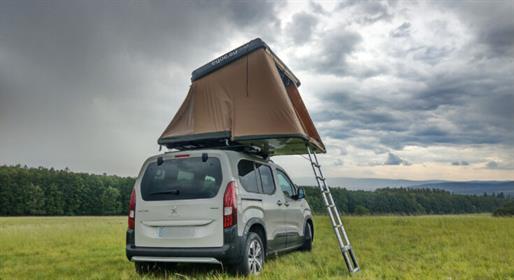The Peugeot Rifter is a representative of the MPV category, a category that is unfortunately on the decline these days, thanks to the current popularity of crossovers and SUVs. On the other hand, it is still a category that definitely has a lot to offer its users.
In the case of the Rifter and its sibling Berlingo (also Toyota Proace City and Opel Combo ), it is a large interior space with sufficient variability, which is available on a still "reasonable" floor plan of the car.
We have already tested the current generation of the Rifter in many versions, both short and extended versions, as well as with diesel or gasoline under the hood.
However, we currently have a car that has the highest GT Line equipment, a diesel engine and a six-speed manual. So the ideal "base" for setting up a roof tent from Hussarde.

External appearance
For me, the Peugeot Rifter is definitely the best-looking model of the cars on offer. Its front part (which is actually the only part where these cars are clearly and distinguishable from each other) gives a very handsome and confident impression.
The new Rifter also boasts a higher ground clearance and relatively significant plastic cladding, which at least optically tries to bring it closer to the SUV category. However, Rifter did it very carefully, and the mentioned lamination looks really decent.
The side and rear parts then bring considerably box-like proportions, which, however, are redeemed by the already mentioned advantages in the interior of the car.
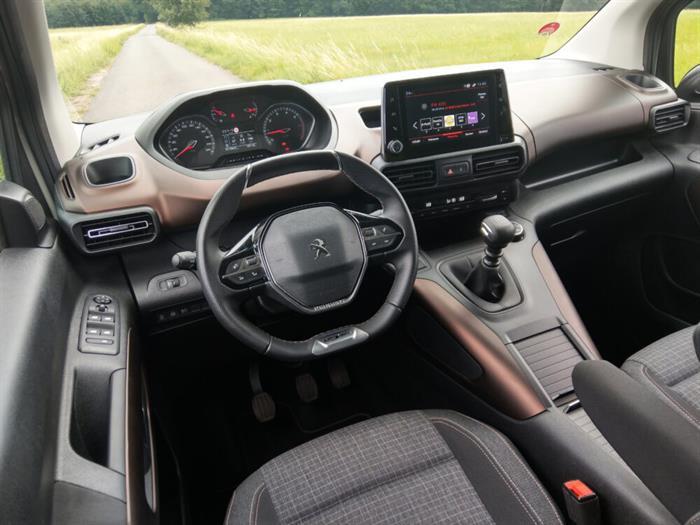
Spaciousness and variability of the interior
At first glance, the interior of the Rifter is very airy and pleasant. The layout of the dashboard in the spirit of the i-Cockpit philosophy works very well even in a car of this category. The raised instrument panel with classic alarm clocks plays a leading role in the front part of the interior together with the on-board infotainment display. The massiveness and bulkiness of the dashboard and central tunnel is then effectively broken up by areas with different colors.
The mentioned on-board infotainment display then sticks out quite well from the dashboard. However, thanks to this, it is very accessible and manageable from the user's point of view. Between the display and the central tunnel, there are air vents and classic manual air conditioning controls.
The relatively massive central tunnel has a start button, an electronic handbrake controller, an assistant controller for driving downhill, a rotary controller for selecting the driving surface and a classic six-speed manual transmission selector. In the tested car, the tunnel went into a voluminous storage box between the driver and passenger seats.
The interior of the car should be praised for its abundance of storage spaces, which have different shapes and positions.
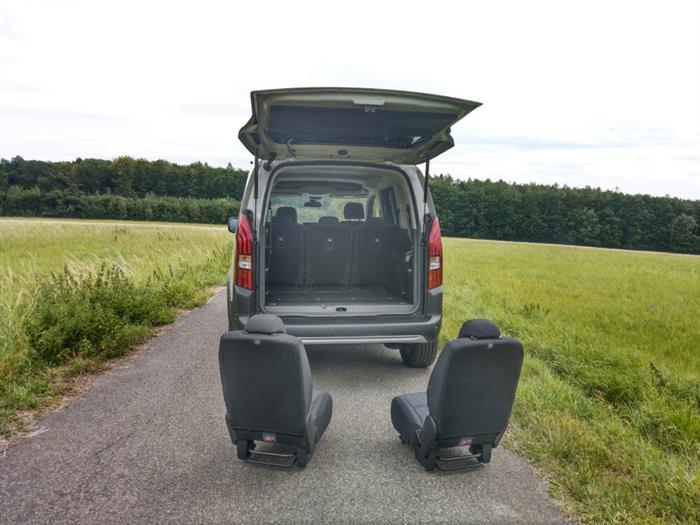
The tested Rifter also had a seven-seat specification, which is solved by a pair of folding and completely removable separate seats. Their bulkiness will have a pleasant effect on the comfort that this third row of seats will offer.
The weight of the seats themselves has a clear overlap in the size of the luggage compartment when they are present. Logically, don't expect much luggage space in a full-fledged seven-seater configuration.
The second row is a trio of separate seats that have a mechanism that allows the seats to be better lowered to the floor and to create an almost ideal plane with the plane of the trunk. The passenger seat allows you to fold down its backrest, allowing you to transport long objects.
The luggage compartment of the tested version in a five-seater configuration offers 775 liters of volume (after the horizontal partition), with the second row of seats folded down, a volume of 3,000 liters.
The interior of the Peugeot Rifter generally deserves praise mainly for its spaciousness and variability. I also appreciate the i-Cockpit principle, which can make the front part of the interior special and different from its competition.

Hussarde Quatro roof tent
The tested Rifter was equipped with a roof tent from the company Hussarde, specifically the Quatro tent. And as the name itself suggests, this tent was designed for 4 people (ideally for 2 adults and 2 children).
The roof tent itself is stored in a case (roof box), which is anchored through the floor of the tent structure to the transverse profiles, which are attached to the roof racks of the car.
My initial concerns about the complexity of breaking it down were quickly proven to be odd. This is a very simple and "one man" mechanism. When the five securing points, which are located around the perimeter of the roof box, are "clicked", the tent goes up very smoothly with your light assistance.
The tested roof tent folds out on its sides, not just at the back. The folding of the tent then takes place gradually, first one side and then the other. After fully tilting out, the last step awaits you on the passenger side, namely the third step, which is to unlock the integrated ladder and flip the second part of the floor to a horizontal position.
In this way, the roof tent gets its final shape and you have no choice but to adjust the height of the floor of the unfolded part, using a telescopic ladder. On the passenger side, after unfolding the tent, you now have a pleasantly covered space on the side of the car.
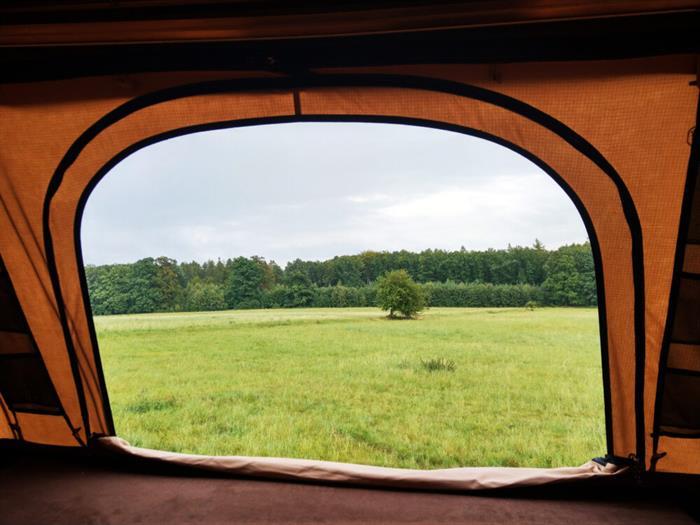
The floor of the roof tent is equipped with a subtle flip-up mattress that offers plenty of comfort. The tent also has transparent mica parts and storage pockets.
As a result, the tested Hussarde Quatro roof tent is a very spacious tent that has an ingenious and very user-friendly system for unfolding and subsequent use.
Its only downside for me is its higher purchase price. The Quatro model is offered by Egoe from CZK 87,120 including VAT.
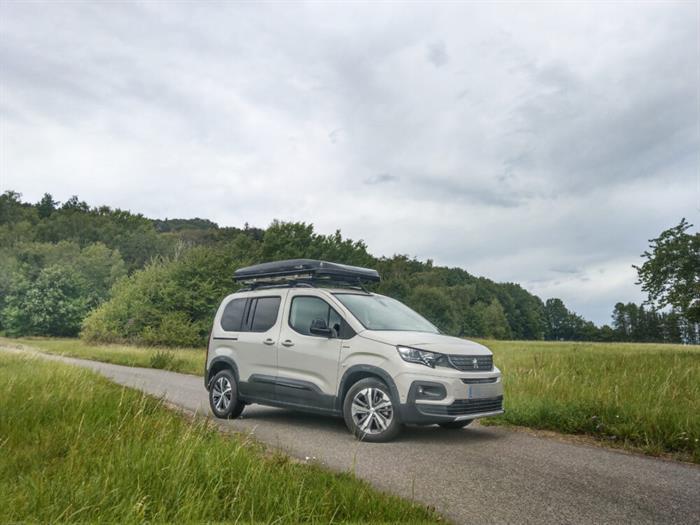
Motorization
The currently tested Rifter was equipped with a diesel engine with a power of 96 kW (135 hp), which is quite familiar to me. I have already met this unit in the tested Rifter Long and Berlingo, where I praised it for its quiet and refined operation, as well as for its sufficient and car-adequate performance.
In the context of the car's size and the presence of a roof tent (or roof box), this motorization will provide you with pleasant driving dynamics with fairly decent fuel consumption. During the week-long test, we drove the car with a consumption of just over 6 liters of diesel.
In this category, the chassis of the car is quite logically tuned for comfort, without any major signs of tilting. The tested car also had the Grip Control system, which adjusts the behavior of the car on different surfaces. Furthermore, an assistant that maintains a constant speed when driving downhill (steep slope).
You will only become aware of the roof box as part of the driving experience at speeds above 90 km/h, when it becomes more noisy due to the air flowing around it.
The traditional positives of this car certainly include its great maneuverability, which is worth its large raid. Parking itself is really very simple thanks to the parking camera.
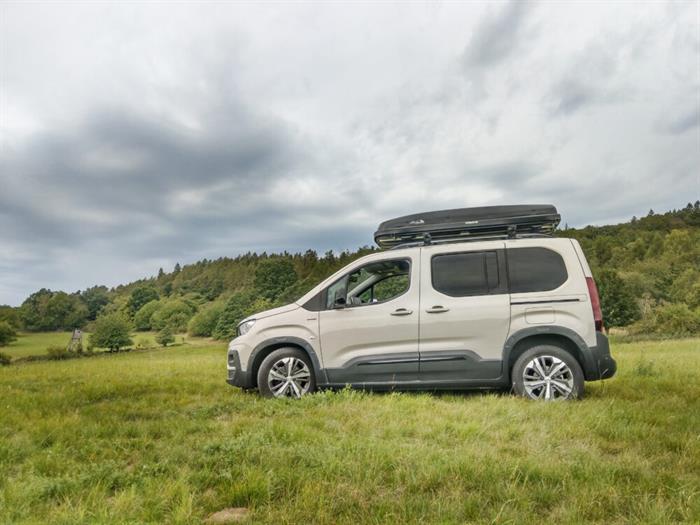
In conclusion
The basic price of the classic Rifter starts from CZK 397,000 including VAT. This is the basic Active equipment with a 1200 petrol engine and a six-speed manual gearbox.
The currently tested piece, i.e. the classic Rifter with the highest GT Line equipment, can be purchased from CZK 513,000 including VAT, the car is equipped with a diesel fifteen-speed manual and a six-speed manual, the automatic is available from CZK 568,000 including VAT.
The Peugeot Rifter is a handsome car that offers a sufficiently dimensioned and variable interior space, as well as a refined and economical diesel power unit, all of which is offered at a very interesting purchase price.
Its combination with a roof tent then works excellently and enriches the already versatile car with other very pleasant options.
Source: Author's text
Image source: Author's own photos

